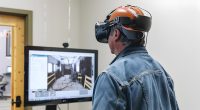In the expansive and remote regions of the Northern Territory (NT) in Australia, accessing specialized healthcare services such as pediatric sleep health is a significant challenge. A new study led by Natalie Gentin and her team has introduced a promising telehealth solution tailored to the unique needs of children living in these underserved areas. The research, titled “Establishing a telehealth model addressing pediatric sleep health in remote and rural Northern Territory Australia: Overcoming the distance barrier,” explores the effectiveness of video telehealth consultations conducted by an interstate pediatric sleep physician. This innovative approach allowed for both clinical history assessment and physical findings to be evaluated virtually, with follow-up diagnostic procedures like Polysomnography (PSG) performed locally in Darwin, NT. Spanning five years, from 2015 to 2020, the study involved 812 children, with a significant focus on the Indigenous communities often located in the most remote areas. The findings highlight how telehealth can reduce the barriers posed by distance, offering a quicker, more effective pathway from referral to diagnosis and treatment. This model not only facilitated timely health interventions but also underscored the necessity for further enhancements to make quality sleep health services accessible to all children across the region.
The Northern Territory of Australia, comprising vast and often inaccessible landscapes, presents unique challenges in healthcare delivery, particularly for specialized services such as pediatric sleep health. Remote communities, many of which are populated predominantly by Indigenous Australians, face significant barriers to accessing healthcare due to their geographical isolation, limited availability of specialists, and logistical complexities. Addressing these health disparities requires innovative approaches, especially for conditions that might not be immediately life-threatening but have profound impacts on long-term health and quality of life, such as sleep disorders in children.
Sleep health is crucial for the physical and mental development of children. Disorders such as obstructive sleep apnea, insomnia, and circadian rhythm disturbances can severely affect a child’s cognitive functioning, behavior, growth, and overall health. Historically, the residents of remote NT communities needing pediatric sleep health services had to travel long distances to urban centers, incurring significant expenses and logistical difficulties, or forgo specialized care altogether.
The research led by Natalie Gentin aims to bridge this gap through the use of telehealth. The concept of telehealth is not new; however, its application in pediatric sleep health within such a challenging context is innovative. By leveraging technology, Gentin’s study proposes a model that can alleviate the need for extensive travel, thus providing timely and more equitable healthcare access.
The study, stretching over five years from 2015 to 2020, coincides with a period where telehealth began seeing increased acceptance and usage globally, driven in part by advances in technology and, later, by the necessities imposed by the COVID-19 pandemic. This broader context of growing digital health solutions provides a conducive environment for experimenting with and implementing such innovative healthcare delivery models in remote settings.
The relevance of the study also extends beyond providing a practical solution to a logistical problem. It touches on larger themes such as the integration of indigenous knowledge systems and cultural sensitivity into healthcare delivery. Indigenous children, who make up a substantial portion of the population in remote NT, often face systemic disadvantages and cultural misunderstandings in mainstream healthcare settings. A telehealth service that respects and integrates cultural contexts is not only innovative but necessary.
Moreover, the study’s focus on sleep disorders — often under-researched and overlooked in pediatric health — highlights the need for greater awareness and resource allocation to this aspect of child health. By documenting and evaluating the effects of telehealth on managing pediatric sleep disorders in remote settings, Gentin’s research contributes valuable insights into the scalability and adaptability of such models across different medical specialties and potentially different geographic and cultural settings.
This research not only provides a model that could be replicated or adapted in other remote regions of the world but also sets a precedent for comprehensive, culturally sensitive, and accessible healthcare systems that leverage technology to meet their unique challenges.
To evaluate the feasibility and effectiveness of a telehealth approach for pediatric sleep health in remote Northern Territory, Australia, Natalie Gentin and her team designed a comprehensive study methodology. This methodology was crafted to ensure detailed collection and analysis of data regarding the efficiency of telehealth consultations and the associated clinical outcomes for the children involved.
### Study Design
The research was structured as a prospective cohort study conducted over a five-year period, from 2015 to 2020. It involved 812 children who were referred for various sleep-related disorders. These children predominantly resided in remote areas, with a substantial proportion belonging to Indigenous communities.
### Participants
Participants were recruited through referrals from general practitioners, pediatricians, and other healthcare providers in the Northern Territory. The inclusion criteria allowed for a broad spectrum of sleep disorders, ranging from common issues like obstructive sleep apnea to more complex conditions such as circadian rhythm disorders.
### Telehealth Model
The telehealth model implemented in this study involved initial consultations conducted via video calls. These calls were managed by an interstate pediatric sleep physician, who assessed the clinical history and conducted a virtual physical examination with assistance from the local healthcare workers when necessary. This approach maximized the use of local resources and reduced the need for travel.
### Diagnostic Procedures
When further diagnostic assessment was necessary, such as Polysomnography (PSG), arrangements were made for these to be performed locally in Darwin. This allowed for high-level diagnostic testing without requiring significant travel for the participants, thereby adhering to the study’s aim of minimizing patient burden.
### Data Collection and Analysis
Data were collected on various parameters including the time from referral to first consultation, diagnosis accuracy as corroborated by subsequent PSG when used, and the time to initiation of treatment post-diagnosis. The satisfaction levels of both patients and healthcare providers with the telehealth service were also systematically recorded through structured questionnaires.
### Statistical Methods
The effectiveness of the telehealth intervention was analyzed using descriptive statistics to summarize demographic and clinical characteristics. Outcomes related to health service efficiency (e.g., reduction in wait times) and clinical outcomes (e.g., improvement in symptoms) were evaluated using inferential statistics, including regression analysis to adjust for potential confounders.
### Challenges and Adjustments
Given the logistical and technical challenges often encountered in remote areas, such as internet connectivity issues, the study design included protocols for alternative arrangements. For instance, if a video call was disrupted, telephone consultations were used as a backup. Additionally, regular training sessions for both the local healthcare workers and the participants were conducted to familiarize them with the technology and procedures involved.
### Ethical Considerations
Ethical approval was obtained from the relevant institutional review boards. Special attention was given to culturally sensitive practices, ensuring the study’s procedures were respectful and appropriate for the Indigenous populations involved. Participants and their guardians provided informed consent, with additional community engagements conducted to maintain transparency and collaboration.
### Conclusion
The methodology adopted by Natalie Gentin and her team was meticulously planned to tackle the unique challenges of delivering pediatric sleep healthcare in remote settings through telehealth. The combination of local diagnostic procedures with remote specialist consultations aimed to provide a balanced approach, potentially setting a model that could be replicated in similar environments globally. The study’s outcomes are awaited to further validate this innovative healthcare delivery model.
### Key Findings and Results
Natalie Gentin’s study yielded several compelling findings that underscore the benefits of using a telehealth model for pediatric sleep health in remote areas such as the Northern Territory. Here is a summary of the key results and their implications:
1. **Reduction in Wait Times**: One of the most significant outcomes of the study was the drastic reduction in wait times from referral to initial consultation. Prior to the implementation of the telehealth model, average wait times could be as long as several months. The study showed that with telehealth, the time was reduced to an average of just a few weeks, facilitating quicker access to specialized care which is critical in addressing many progressive sleep disorders effectively.
2. **Diagnostic Accuracy and Efficiency**: The findings demonstrated that the assessments made through telehealth consultations closely matched those made during in-person visits, as evidenced by the diagnostic follow-ups with Polysomnography (PSG) in local settings. This high level of accuracy in initial telehealth consultations underscores the reliability of video assessments conducted by skilled practitioners, even in complex pediatric cases.
3. **High Levels of Satisfaction**: Both healthcare providers and patients (including family members) reported high levels of satisfaction with the telehealth services. The convenience of receiving high-quality care without the need to travel long distances was a frequently noted benefit. This aspect of the service was particularly appreciated by families from Indigenous communities, who often face significant logistical challenges in accessing healthcare services.
4. **Improved Treatment Initiation**: With quicker diagnostics, the initiation of treatment following definitive diagnosis was also expedited. The study noted that the median time from diagnosis to the start of treatment was reduced, compared to traditional methods, which often involved repeated travel and delays due to the limited availability of specialists.
5. **Cultural Sensitivity and Engagement**: The study also highlighted effective engagement with Indigenous communities, incorporating culturally sensitive approaches that were well-received by participants. This aspect of the telehealth model helped in building trust and encouraging a higher level of participation in the program, crucial for its success in these communities.
6. **Challenges**: Despite the positive outcomes, the study did identify challenges, primarily related to technological limitations such as inconsistent Internet connectivity which could hinder the effectiveness of video consultations. However, adaptive strategies such as the use of telephone consultations as a backup and ongoing training on technology use for both healthcare providers and participants helped mitigate these issues.
7. **Scalability and Potential Expansion**: The successful implementation and positive outcomes of the telehealth model in this study suggest potential scalability and expansion to other medical specialties and remote regions. The model shows promise not only in pediatric sleep health but could also be adapted for other types of healthcare services where specialist access is limited.
### Conclusion
The results from this innovative study provide a compelling argument for expanding telehealth services as a viable and effective solution to address the healthcare disparities faced by remote communities, particularly Indigenous populations. By reducing barriers such as travel and wait times, and by offering culturally sensitive and timely healthcare, telehealth stands out as not just an alternative, but as a potentially superior mode of service delivery in certain contexts. Further research and continuous improvement in technological infrastructures could enhance the effectiveness and reach of telehealth services, making specialized care accessible to all who need it, regardless of their geographical location.
### Future Directions and Final Thoughts
The groundbreaking findings from Natalie Gentin’s study on the implementation of a telehealth model in pediatric sleep health within remote and rural settings of the Northern Territory open numerous pathways for future research and potential expansions of this healthcare delivery model. The success witnessed in this specific domain suggests that similar telehealth paradigms can be adapted for other medical specialties that experience similar access issues, such as mental health, chronic disease management, and prenatal care.
#### Expansion to Other Medical Specialties
Building on the positive outcomes of this study, future research could explore the application of telehealth in other areas of medicine, particularly those that do not require physical interventions that must be carried out in person. Conditions like diabetes management, mental health disorders, and routine antenatal care are potential areas where telehealth could significantly improve access and outcomes for remote populations.
#### Technological Advancements
Continuous advancements in technology will be crucial in addressing existing challenges, such as internet connectivity and the integration of more advanced diagnostic tools directly usable by patients at home or by local healthcare providers. Future investments could focus on enhancing the robustness of telecommunication infrastructure and exploring the use of mobile health (mHealth) applications that could support remote health monitoring and management.
#### Policy and Funding Support
To realize the full potential of telehealth, supportive policies and funding mechanisms are essential. Governments and healthcare organizations should consider creating policies that encourage the use of telehealth, simplify licensing and reimbursement processes for telehealth services, and provide financial and technical support to remote communities to establish the necessary infrastructure.
#### Cultural Competence and Community Engagement
The engagement with and acceptance by Indigenous communities demonstrate the importance of culturally sensitive healthcare models. Ongoing efforts should be made to ensure that telehealth services respect and integrate local cultural practices and languages, involve community leaders in the planning and implementation phases, and provide culturally competent training to healthcare providers.
#### Education and Training
Enhancing the skills of both healthcare providers and patients in the use of telehealth technologies is key. Continued education and training programs are crucial to increase the comfort level and efficiency of all users, thereby maximizing the benefits of telehealth services.
#### Research and Evaluation
It is vital to continue research in this area, not only to track the long-term outcomes and efficacy of telehealth approaches but also to explore innovative solutions to emerging challenges. Comparative studies could provide more data on cost-effectiveness and patient outcomes between traditional and telehealth models.
#### Final Thoughts
The study conducted by Natalie Gentin and her team represents a significant step forward in overcoming geographical and logistical barriers to healthcare access. Its success lays a strong foundation for the expansion of telehealth across different regions and disciplines, promising a more equitable healthcare landscape. As we move forward, it will be essential to focus on the scalability of such models, ensuring they are adaptable and sustainable. With commitment from healthcare leaders, policymakers, and communities, telehealth can transcend its current supplementary role, becoming a cornerstone of modern healthcare delivery, particularly in underserved regions around the globe. Autonomy, empowerment, and improved health outcomes could be within reach for remote communities worldwide, making this not just an innovation but a revolution in healthcare access and equity.









